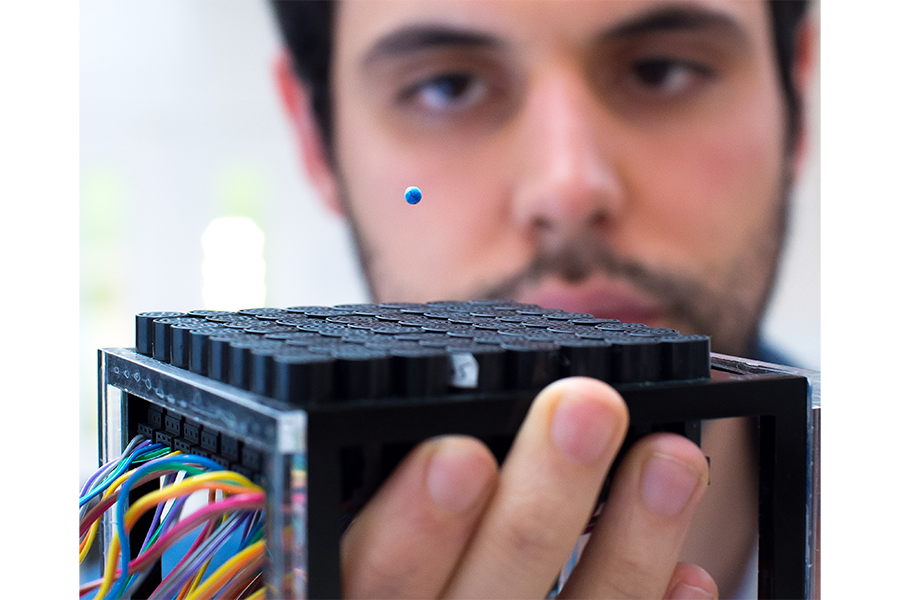Scientists create acoustic 'tractor beam'
Loading...
A team of engineers from the Universities of Sussex and Bristol built a device that uses sound waves to remotely lift and move objects – just like a UFO-abduction tractor beam, but without the aliens and malice.
“In our device we manipulate objects in mid-air and seemingly defy gravity,” said Sriram Subramanian, professor of informatics at University of Sussex – formerly of Bristol – in a press release.
But there is nothing supernatural about the sonic tractor beam.
In a paper published Tuesday in the Nature Communications, Dr. Subramanian and his colleagues explain that it works using by surrounding an object with high-pitched, high-intensity sound produced by “64 miniature loudspeakers (driven at 40Khz with 15Vpp, around 9 Watts of power)” that create an acoustic hologram, or force field, in which the object can be immobilized, levitated, moved and rotated by carefully controlling audio output.
In testing, scientists controlled a spherical bead made of expanded polystyrene and measuring 1.98mm in diameter. Researcher Asier Marzo said, “It was an incredible experience the first time we saw the object held in place by the tractor beam. All my hard work has paid off, it’s brilliant.”
Professor Bruce Drinkwater, of Bristol University’s Department of Mechanical Engineering, said, “We all know that sound waves can have a physical effect. But here we have managed to control the sound to a degree never previously achieved.”
The team discovered three shapes of acoustic force fields capable of working as a tractor beam. The first, “resembles a pair of fingers or tweezers;” the second is an “acoustic vortex” that traps an object at its core; and the third is “best described as a high-intensity cage,” that holds an object in place from all directions.
The team is working on variants of the technology, including a larger beam, “with a different working principle,” that will hopefully levitate a soccer ball from 30 feet away; and a scaled down version, for “manipulating particles inside the human body,” which could aid in microsurgery. The engineers also believe their sonic tractor beam carries the capacity for a wide array of applications, such as a “sonic production line,” that could assemble delicate products without physical contact.
The sonic tractor beam was created in a partnership with Ultrahaptics, a company co-founded by Professor Subramanian in 2013 with technology originally developed at Bristol, which employs ultrasound for projection of sensations, “through the air and onto the user” – enabling one to “receive tactile feedback without needing to wear or touch anything.”
With Ultrahaptics, users are able to “’feel’ touch-less buttons and get feedback for mid-air gestures or interact with virtual objects.” The company is currently courting commercial customers from multiple markets.







